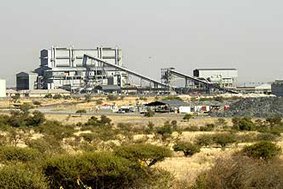- Home
- News
- Features
- Topics
- Labor
- Management
- Opinions/Blogs
- Tools & Resources
South Africa Could Do More For Miners, Says ILO Mining Specialist
South Africa could do more for the nation’s miners, says the International Labour Organization’s mining industry specialist.
ILO News – South Africa has taken significant steps since the end of apartheid to address working conditions in the mining industry, but there is still a lot of room for improvement, said International Labour Organization mining specialist Martin Hahn.
“More efforts could be made to better implement existing mining regulations, especially when it comes to the health and safety of minersn” said Hahn, noting that unions have kept the safety issue on top of the social agenda.
On 16 August 2012, dozens of people died in the Marikana platinum mine in South Africa’s North West province after police fired on protesting miners who were calling for higher wages and better working conditions.
Hahn said that miners such as the ones from Marikana – an area with both opencast and underground operations – were often exposed to a variety of safety hazards: falling rocks, exposure to dust, intensive noise, fumes and high temperatures, among others.
Many miners also suffer from diseases such as silicosis and tuberculosis (TB). HIV rates can also be high due to the fact that, in some cases, miners leave their families behind to find work and are more exposed to casual sex.
With respect to wages, salaries are usually high for high-skilled workers such as engineers and managers, but they can be very low for miners who are trained on the job and who have limited formal education.
South Africa Sees Drop In Mine Fatalities
The mining industry has been booming in South Africa over the last few years. According to a government report from 2008, about 2.7% of the economically active population was employed in this sector.
The drop in fatality rates clearly shows that significant efforts have been made to improve the safety of South African mines, but a lot remains to be done to attain the goal of zero fatality.
The government has taken a series of steps to improve working conditions in the mining industry. In fact, the number of fatalities in South African mines dropped from 774 in 1984 to 128 in 2010.
The turning point was the reform of the country’s mining legislation.
The reform was carried out following the principles of the ILO’s Safety and Health in Mines Convention, 1995 (No.176), which the country then ratified.
“The drop in fatality rates clearly shows that significant efforts have been made to improve the safety of South African mines, but a lot remains to be done in order to create a much-needed preventive safety and health culture in every single mine and for South Africa to attain the goal of zero fatality,” said Hahn.
He added that working conditions can vary a lot depending on whether a mine is new or old, whether it is opencast or underground, its depth and the type of mineral being mined.
List your business in the premium web directory for free This website is listed under Human Resources Directory





